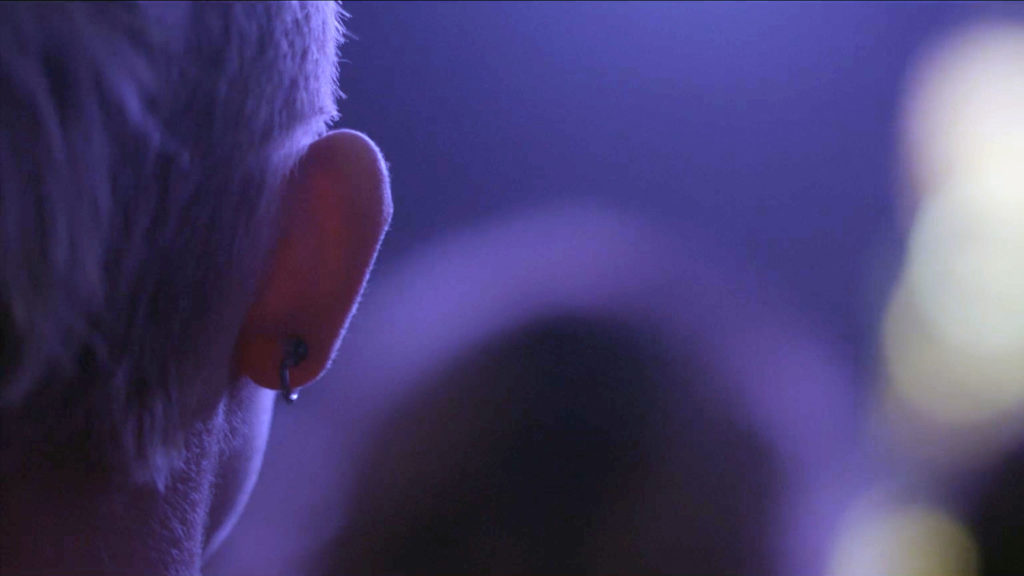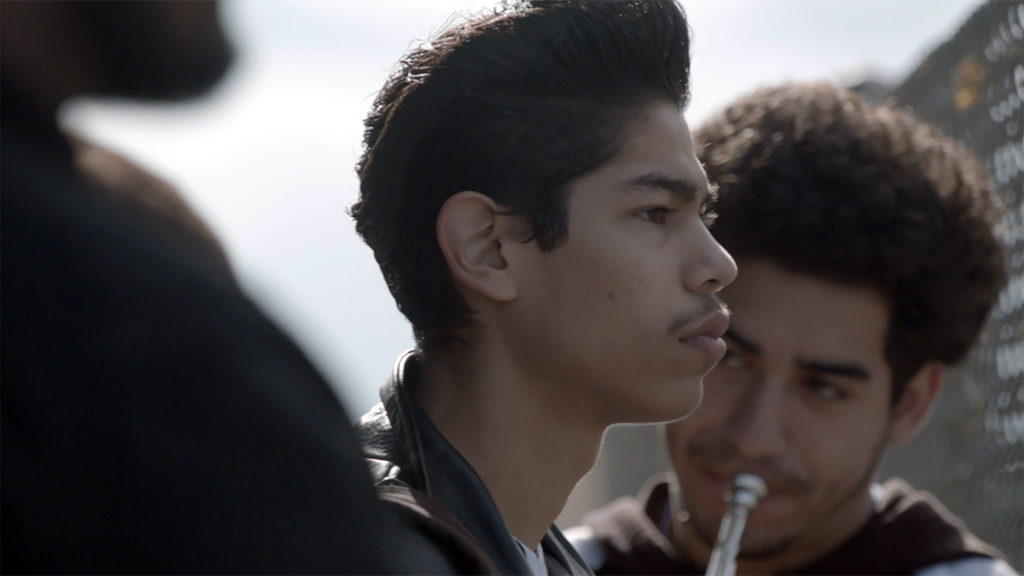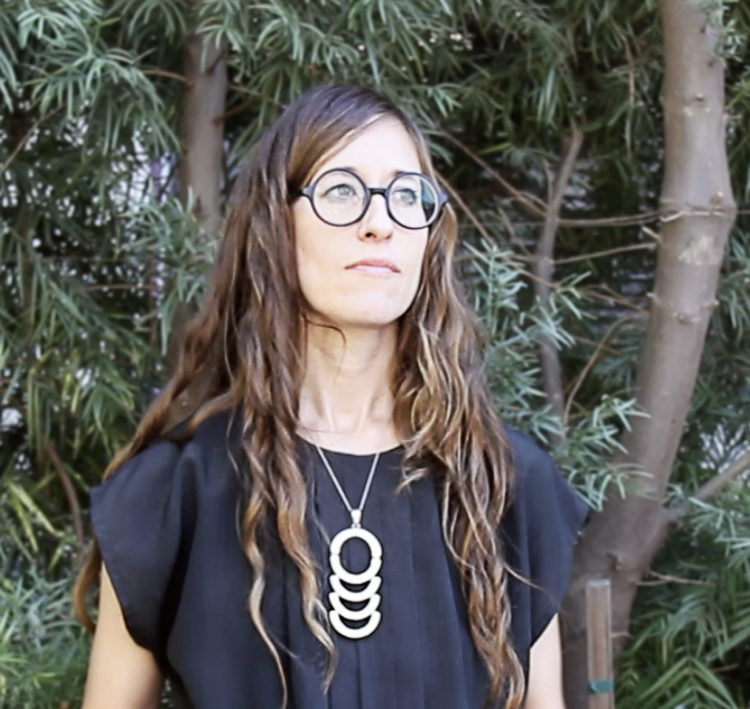The Sound of Silence On Screen
An experimental Sundance documentary upends audio-visual conventions. Nyke Prince appears in The Tuba Thieves by Alison O’Daniel, an official selection of the NEXT section at the 2023 Sundance Film Festival. Courtesy of Sundance Institute. | Photo by Derek Howard.
Nyke Prince appears in The Tuba Thieves by Alison O’Daniel, an official selection of the NEXT section at the 2023 Sundance Film Festival. Courtesy of Sundance Institute. | Photo by Derek Howard.
The Tuba Thieves
Dir. By Alison O’Daniel
“The Tuba Thieves,” which premiered at the Sundance Film Festival on Sunday, is by its nature both radical and frustrating. Its title hints at a story about a spate of California robberies in the early 2010s, which left a dozen local high schools without their tubas. However, its approach to cinematic language is entirely — and intentionally — at odds with how one might even interpret an on-screen “story” in the first place.
When the aforementioned thefts occurred, filmmaker Alison O’Daniel noted the unwavering media focus on the thieves themselves. However, as a Deaf artist, she was drawn to the dimensions of this tale that weren’t being reported on at the time: about what these local marching bands might sound like without their lowest brass, about how the tuba players themselves might stay occupied without their instruments, and, more generally, about the loss of sound. The film — a work of splintered, esoteric docu-fiction — is an unexpected yet wholly necessary piece that reduces the titular thieves to unseen interlopers between other people’s stories, as it seeks to turn filmic decoding on its head.

Only one of the movie’s many subjects, Geovanny Marroquin, is directly tied to the events, as the real-life drummer of a high school band impacted by the robberies. However, the way O’Daniel captures his daily life is more concerned with the world around him, and the way it sounds. Much of “The Tuba Thieves” is a sonic portrait of Los Angeles and its noise pollution, a world populated by a roster of semi-fictional characters. Alongside Geovanny, the most prominent subject is Nyeisha “Nyke” Prince, a Deaf drummer and actress playing herself, who O’Daniel frequently films amidst casual ASL (American Sign Language) conversations with friends and loved ones about her daily anxieties (or, at times, nothing in particular). However, what makes these chats especially riveting is O’Daniel’s brain-tickling use of subtitles, an increasingly common tool even amongst hearing viewers, but one often taken for granted.
Last year’s Best Picture Oscar winner “Coda” — which also premiered at Sundance, back in 2021 — also featured Deaf characters, and it made minute adjustments to the way it staged and edited its snappy, comedic conversations, so that even subtitled ASL dialogue would remain visible. The effect was subtle, and perhaps even radical for a simple, feel-good movie (albeit one many have dubbed a hearing person’s film about deafness). But it’s not the kind of technique that might stand out to an average viewer, let alone one that might comment on the history of cinema.
The conventions of movie making and movie watching have been sound-centric for well over a century. Even in the silent era, films were generally accompanied by a pianist or organist, and today, it’s hard to imagine the cinematic landscape without some element of sound. “The Tuba Thieves,” from its very introduction, plays with this idea, filming a pair of nameless characters speaking ASL, but framing them with traditional dramatic blocking. One character’s back is to the camera, which wouldn’t ordinarily impede an oral conversation from being heard, but his signing is obscured in the process, and the movie’s captions refuse to interpret his words, turning the very idea of sound from something heard into something seen.

As the camera drifts from this conversation, switching its focus from people to non-human subjects (planes, buildings, cars, even plant life), the subtitles begin to offer unconventional insights. Rather than simply words, or the relevant atmospheric sounds we’re used to reading on-screen (footsteps, gunshots, creaking doors, etc.), “The Tuba Thieves” treats us to a tongue-in-cheek array of onomatopoeic descriptors like “ZHZHZHZ” for the rumbling of engines, and even “mmmmMMMMmmmm” during a fantasy sequence of a conversation between two plants. At times, the captions even contextualize the exact decibel measurement of the sounds on screen, creating a more detailed and dimensioned sonic portrait of LA in ways that traditional sound mixing and editing alone might not have been able to achieve without written and visual interpretation.
Like with “Coda,” one might argue that “The Tuba Thieves” is also a movie about deafness made for non-Deaf viewers, given its reliance on the way sound moves and is heard. However, it’s also a film that demands deeper consideration of this very concept, the idea that cinema, or any art form, is primarily for the hearing. When it isn’t following Nyke or Geovanny in contemporary LA, it frequently hops back in time and visits various musical performances with intriguing ties to sound. Through interviews, it paints a portrait of a Prince concert performed for the students at Gallaudet, the world’s first and only Deaf university. Through re-enactments and the visual mimicry of grimy, low-budget documentary aesthetics, it re-constructs a late 1970s punk performance at a Deaf club in San Francisco. And, in a polished dramatic re-enactment, it re-creates a 1950s public performance of “4′33,” John Cage’s famous experimental composition comprising over four minutes of complete silence, during which a frustrated audience member walks out in a huff and takes an absurdly long stroll through a nearby forest.
The latter is perhaps both the funniest and most vital vignette in “The Tuba Thieves,” acting not only as a satirical portrait of obtuse or impatient reactions to experimental art, but as a mirror as well, to a film that inserts itself directly into Cage’s artistic lineage by robbing viewers of familiar acoustic comforts. However, perhaps a more immediate comparison is the late Jean-Luc Godard, who spent his entire career upending cinematic conventions. As far back as his debut film, 1960’s “Breathless” (which helped kick off the French New Wave), Godard had been robbing viewers of expected narratives — for instance, the movie’s initial police shootout, which cuts abruptly around any actual gunshots or violence — and as the world acclimated to his form of cinema, he experimented further. Notably, his 2014 film “Goodbye to Language” used the medium of 3D to explore, among other ideas, the relationship between sound and moving images in a three-dimensional space, something O’Daniel does frequently when she places her camera amongst entire groups of characters speaking ASL.

The dramatic rhythm that dictates a spoken dialogue scene is distinctly at odds with this set up. So, when O’Daniel and co-editor Zack Khalil cut between various conversations unfolding in this friend circle, the picture and subtitles enter a footrace of sorts. The captions are not only tasked with translating the signing occurring on screen, but of luring viewers into the conversations contained within next cut, and echoing those in the last — otherwise known as “J” and “L” cuts in sound-centric editing, conventions dating back to the very first sync-sound film, the 1927 musical “The Jazz Singer.” The subtitling doesn’t always keep up with this convention, so when the scene switches perspective or jumps from one ASL conversation to the next, viewers essentially enter ongoing narratives robbed of their full context, a piercing parallel to the way Deaf and Hard of Hearing communities might struggle when navigating a world built primarily for the hearing.
That the film is disorienting is bound to alienate many viewers; O’Daniel herself describes it as a cinematic game of “telephone,” whose momentum thrives on sound-centric misinterpretation. And while this comparison may not always manifest in the disjointed narrative — in “telephone,” one has the advantage of retracting each step to see what exactly was miscommunicated; there’s no such luxury here — the abstractions within “The Tuba Thieves” force viewers out of their cinematic comfort zones, leaving them with no choice but to actively participate in an otherwise passive process. The result isn’t just hearing in new ways, but truly listening to what’s being said.
Your support matters…Independent journalism is under threat and overshadowed by heavily funded mainstream media.
You can help level the playing field. Become a member.
Your tax-deductible contribution keeps us digging beneath the headlines to give you thought-provoking, investigative reporting and analysis that unearths what's really happening- without compromise.
Give today to support our courageous, independent journalists.
You need to be a supporter to comment.
There are currently no responses to this article.
Be the first to respond.